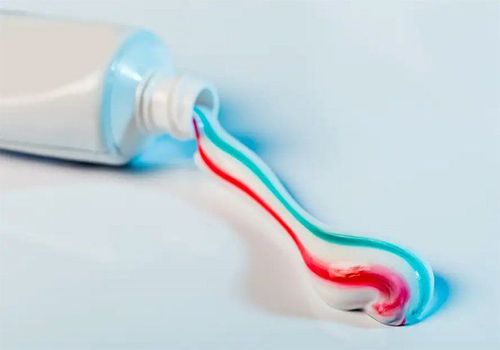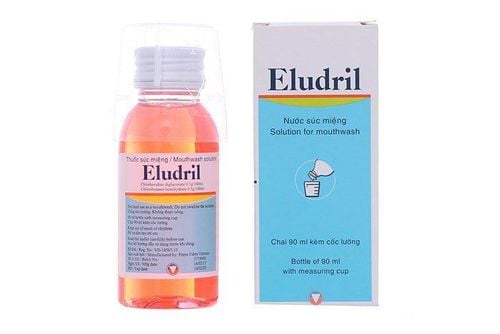This is an automatically translated article.
The status of children with tooth decay and rickets is always a concern of parents. Many people believe that using fluoride-containing products will help improve this condition. So the truth is is fluoride good for bones and what role does fluoride play?
1. What is Fluorine?
Fluoride is a mineral found in bones and teeth. In addition, they can also be found naturally in the following substances: soil, water and even air.In dentistry, fluoride is often used to strengthen the outermost layer of tooth enamel. Fluoride also helps prevent tooth decay and can be added in small amounts to public water supplies in the United States and in many other countries. This process is called water fluoridation.
Currently fluoride is mainly used to improve oral health in preparations such as toothpaste or mouthwash to prevent tooth decay.
In addition, fluorine is used for a number of purposes such as PET CT digital film imaging, making pesticides, creating teflon, steel and aluminum products.
2. The role of fluoride in teeth and bones
Fluor participates in the process of tooth development, creating dentin and enamel in the body. The process of accumulation and mineralization of tooth enamel takes place from an early age with the formation of baby teeth and permanent teeth. The process of demineralization is when the bacteria in the mouth break down sugars and carbs to create acids that erode tooth enamel, then the enamel will weaken, creating conditions for bacteria to enter and cause tooth decay. Fluoride will work to help remineralize tooth enamel to prevent tooth decay and restore tooth decay at an early stage (when cavities have not yet formed).
On the other hand, fluoride also plays an important role in the process of organic skeleton formation and mineralization of dense bone tissue by influencing the regulation of calcium and phosphorus metabolism. A lack of fluoride can lead to tooth decay and osteoporosis.

Giải đáp fluor có tốt cho xương không?
3. What is the right way to add fluoride?
To prevent tooth decay, people often add fluoride through the mouth by using toothpastes containing this essential mineral. In addition, there are nutritional supplements in the form of functional foods circulating on the market. A larger measure of fluoride supplementation is “domestic water fluoridation” in cities and places where adequate amounts of fluoride can be introduced for daily use.
Fluorine is a mineral with a relatively narrow biological limit, that is, the maximum and minimum limits are very close to each other, so the lack or excess of fluoride is harmful to the body. It has an allowable limit in the range of 2.4 - 4.8mg/kg of food and also applies to nutritional supplements. The allowable level of fluoride in drinking water for daily life is 1.2mg/l.
However, adding fluoride alone is not enough. You need to provide children with a reasonable, balanced and complete diet of all essential nutrients for the body and combine with regular exercise.
4. What are the consequences of fluorine abuse?
Like other nutrients, fluoride also has biological limits as mentioned above. If this limit is exceeded, there will be some consequences as follows:
4.1. Fluoride deficiency
When the fluoride content in water is less than 0.5mg/l, the body will have the most typical manifestation of tooth decay. Studies have demonstrated that the amount of fluoride in decayed teeth is lower than in normal teeth, leading to a decrease in their resistance to acids. Fluoride can help reverse the process of tooth decay in the early stages but does not eliminate tooth decay because of the role of sugars. In addition, oral hygiene also greatly affects the progression of tooth decay.

Bổ sung fluor bằng cách sử dụng kem đánh răng có chứa chất khoáng này
4.2. Excess fluoride
A typical disease caused by excess fluoride is dental fluorosis. This disease is caused by too much fluoride in children during the period of formation and development of permanent teeth. The age of onset ranges from 1 to 4 years old, over 8 years old is considered not at risk. Manifestations of the disease with white or yellow stains on the enamel, the streak size grows larger and can oxidize to create a brown color. In addition, there are grooves and eroded edges on the enamel surface, causing the teeth to become fragile, causing damage to the permanent teeth.
If too much fluoride is added for a long time, it can cause bone fluorosis (skeletal fluorosis), which makes bones weak, deformed and fragile. The disease causes irritable bowel symptoms and aching joints, making it easy to misdiagnose as rheumatoid arthritis.
In short, fluoride is good for teeth and bones, but like other nutrients, they need to be supplemented with the right amount to be best. Therefore, in order to have good teeth and strong bones, we need to combine many different measures at the same time.
Follow Vinmec International General Hospital website to get more health, nutrition and beauty information to protect the health of yourself and your loved ones in your family.
Please dial HOTLINE for more information or register for an appointment HERE. Download MyVinmec app to make appointments faster and to manage your bookings easily.













